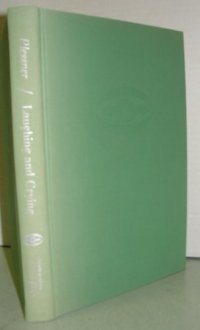
Ebook: Laughing and Crying: A Study of the Limits of Human Behavior
- Tags: Arts & Photography, Biographies & Memoirs, Business & Money, Calendars, Comics & Graphic Novels, Computers & Technology, Cookbooks Food & Wine, Crafts Hobbies & Home, Education & Teaching, Engineering & Transportation, Gay & Lesbian, Health Fitness & Dieting, History, Humor & Entertainment, Law, Literature & Fiction, Mystery Thriller & Suspense, Parenting & Relationships, Politics & Social Sciences, Reference, Religion & Spirituality, Romance, Science & Math, Science Fiction & Fantasy, Self-Help, Sports & Outdoors, T
- Series: Northwestern University Studies in Phenomenology & Existential Philosophy
- Year: 1970
- Publisher: Northwestern University Press
- Language: English
- pdf
This book explores the human uniqueness of crying and laughing and the range and subtlety of these human expressions from a philosophical perspective.
From the Foreword:
Philosophers have always been given to speculating about the nature of man, usually about his uniqueness, sometimes about his want of uniqueness. But whatever their attitude or interest, they have nearly always focused their attention on man as knower, man as doer, man as speaker, or sometimes, man as maker. There is a whole area of human uniqueness which has been for the most part neglected, that is, the area of non-linguistic expression, whether in facial grimace or in bodily bearing and movement. Where expression has been treated as such, it has usually been in the Darwinian mood of reducing what looked to be human monopolies to their animal forerunners. But the range and subtlety of human expressiveness as such has had little investigation. It has seemed to philosophers, if they have thought of it at all, to be peripheral to the more central questions of knowledge or action.
Helmuth Plessner has long been interested in this neglected theme. In this little book he takes a particularly significant pair of types of expressive behavior, laughing and crying, and considers them both in themselves and in their relation to the fundamental nature of man. Laughing and crying are not "intentional" actions, like speaking, walking, or tacitly giving a sign, say, nodding one's head or smiling in assent. They belong, I suppose, to the Aristotelian class of "involuntary actions." Yet neither are they the sort-of: thing that other animals do; only human beings laugh and cry. Is this just ail accident of our glandular and muscular make-up or does it mean something in relation to the nature of man's existence as a whole? Plessner opts emphatically for the second alternative. He sees in these two phenomena a unique expression of our nature, or better, a breakdown of that nature which characteristically exposes it at its limits.
From the Foreword:
Philosophers have always been given to speculating about the nature of man, usually about his uniqueness, sometimes about his want of uniqueness. But whatever their attitude or interest, they have nearly always focused their attention on man as knower, man as doer, man as speaker, or sometimes, man as maker. There is a whole area of human uniqueness which has been for the most part neglected, that is, the area of non-linguistic expression, whether in facial grimace or in bodily bearing and movement. Where expression has been treated as such, it has usually been in the Darwinian mood of reducing what looked to be human monopolies to their animal forerunners. But the range and subtlety of human expressiveness as such has had little investigation. It has seemed to philosophers, if they have thought of it at all, to be peripheral to the more central questions of knowledge or action.
Helmuth Plessner has long been interested in this neglected theme. In this little book he takes a particularly significant pair of types of expressive behavior, laughing and crying, and considers them both in themselves and in their relation to the fundamental nature of man. Laughing and crying are not "intentional" actions, like speaking, walking, or tacitly giving a sign, say, nodding one's head or smiling in assent. They belong, I suppose, to the Aristotelian class of "involuntary actions." Yet neither are they the sort-of: thing that other animals do; only human beings laugh and cry. Is this just ail accident of our glandular and muscular make-up or does it mean something in relation to the nature of man's existence as a whole? Plessner opts emphatically for the second alternative. He sees in these two phenomena a unique expression of our nature, or better, a breakdown of that nature which characteristically exposes it at its limits.
Download the book Laughing and Crying: A Study of the Limits of Human Behavior for free or read online
Continue reading on any device:

Last viewed books
Related books
{related-news}
Comments (0)